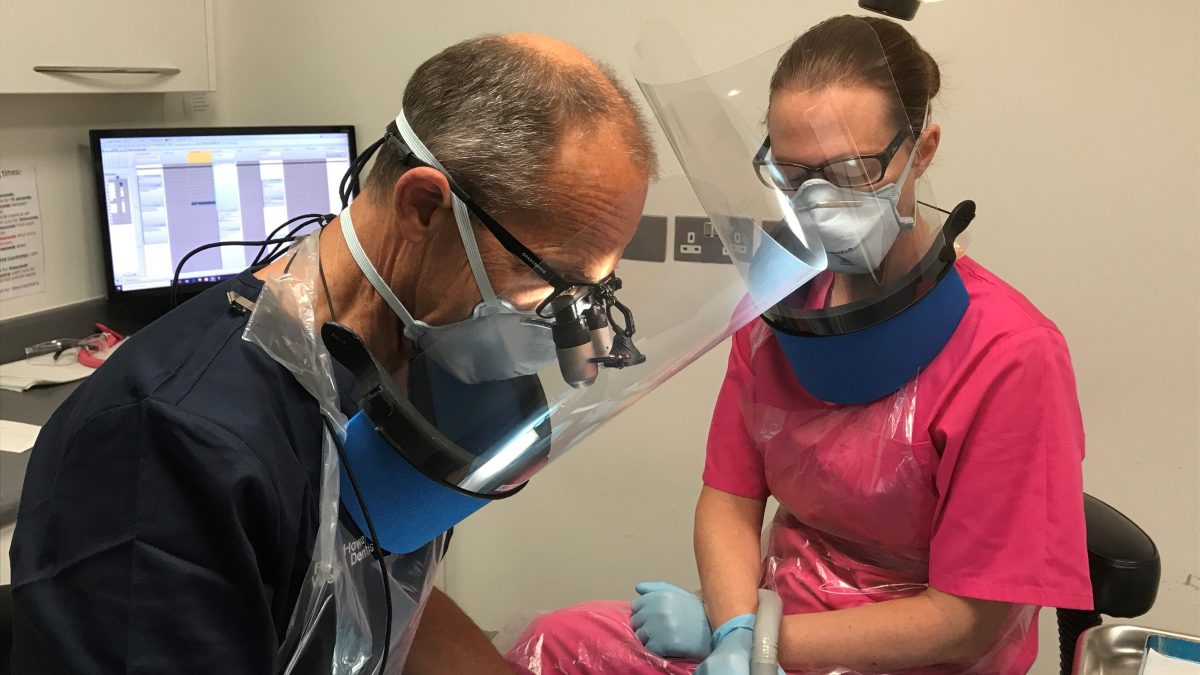Open Wide: Practical experiences getting dental practices back up and running

Instruction video
Tuesday, 16th June 2020
Not a Fogging Clue: Is HOCL the answer to reducing fallow times?
Friday, 26th June 2020In July, Welsh dentists move from Red Alert to High Amber while in Scotland the date for the commencement of a phased opening plan starts on the 22nd June. Dentists in England were given short notice to prepare to open on the 8th June. So what has life been like practically on the front line? Richard Howarth, inventor of the Provizage visor, looks at how dentistry in his practice is changing to provide services safely.
When dentists in England were told they would be opening on 8th June, it came to many as a shock. Dental practices expected notification, before the general public announcement, to give them time to prepare. The practicalities of developing and putting SOPs into place urgently, that work for their individual practices, has presented several challenges.
Richard Howarth is experiencing these first hand. Building team confidence to ensure that dental teams are working safely was the first priority. “The team now has new scripts, and new sets of questions, as they operate in a strange environment that all of us need to get used to,” says Richard. “The reception teams are wearing masks, even when on the telephone, they have plastic screens in front of them and they are getting used to having the front door locked and texting patients sat outside in their cars.”
Higher levels of communication between reception teams and the dental nurses are being cultivated. The reception team are taking patients’ temperatures and running through a COVID-19 questionnaire before they even get into the surgery.
Managing patient appointments is also changing. Patients who are older, vulnerable or have compromised medical histories are being invited to the practice at the beginning of the day. This minimises the potential for cross-infection with the building fallowed overnight. Before COVID-19 many of these patients requested appointments in the middle of the day.
Timing and length of treatments is also being given practical consideration. “As a private practice we are able to provide Aerosol Generating Procedures (AGPs). These have associated fallow times that allow aerosols to settle. It makes sense to minimise the impact the fallow times have on income-generating surgery time. We have scheduled AGP appointments for before lunch and at the end of the day,” reveals Richard. “We are also balancing the length of appointment and frequency to minimise the number of visits required without impacting adversely on patient comfort.”
Prior to COVID a classic crown treatment would have been scheduled over two visits. The first involving preparation and taking impressions, the second being the actual fitting. Now the procedure has been adapted to encourage patients to be less reliant on lab work, increasing the use of technologies like Cerec. This means preparation, scanning, milling and fitting happens in one visit. “Minimising visit frequency and increasing treatment time reduces potential cross-infection opportunities significantly, protecting both the patient and the team,” says Richard.
Other techniques, including high volume suction with placement of rubber dam, are being used. This isolates the mouth allowing an aerosol of disinfected water to be created, limiting exposure to saliva and other potentially COVID-19 infectious materials. “We are adapting techniques to reduce the need to use AGPs and thinking differently about treatment planning to allow our practice to deliver safely and economically,” says Richard.
Treatment plan discussions with patients are also being re-imagined. “We are trying to make these as personal as possible and have begun to make these virtual, using video conferencing calls and email. This has also removed paper being passed around, another potential source of cross-infection,” says Richard.
PPE has also presented challenges. Not only managing availability, but also procurement and delivery. “Some suppliers are less economical with the truth about when they can deliver than others. Dentists need to plan and want honesty and reliability from their PPE supply chains,” suggests Richard. “When it comes to mask fitting there is also discussions on whether practices train internal mask fitters and buy a kit or engage external mask fitting companies.” For private practices, the client conversations around the charges being made for PPE also require consideration.
As the weeks progress new procedures will be adopted, adapted and embedded into working practices. Welsh and Scottish dentists can look to the BDA and English practices for insights into how their SOPs will work in practice as they open up. Sharing experiences to develop best practice will make the profession stronger and safer for DCPs and patients.


